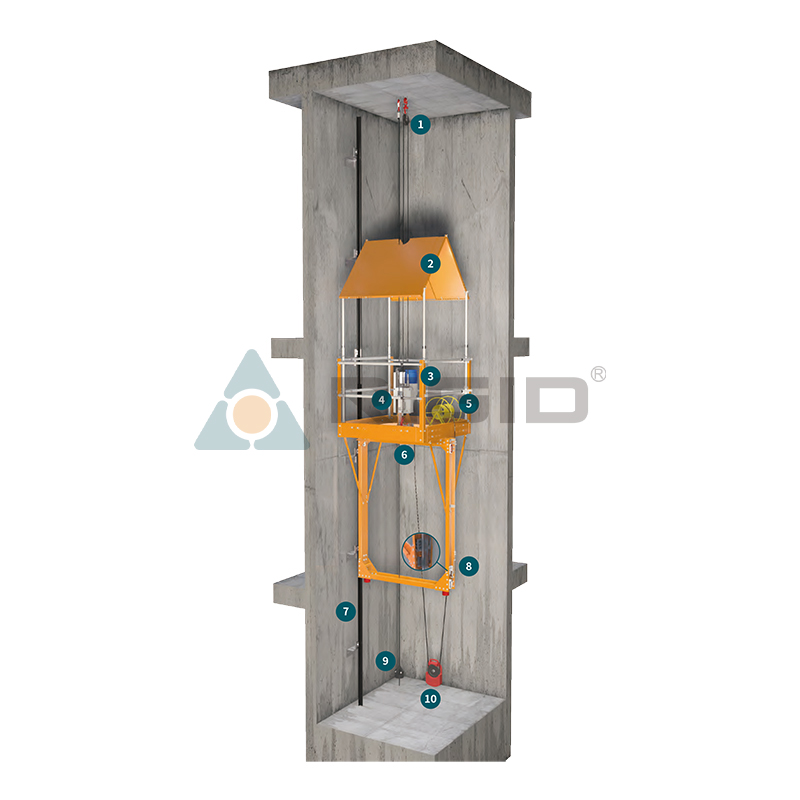Why Elevator False Cars Are Critical for Elevator Safety and Performance
2024-12-21
When you think of elevators, you likely envision the car carrying passengers or goods between floors. However, the behind-the-scenes technology and components are just as important to ensure that these elevators operate smoothly, efficiently, and safely. One such component is the elevator false car. While it doesn’t carry passengers, it plays a critical role in maintaining the performance and safety of the elevator system. In this blog, we will dive into why elevator false cars are so crucial and explore the key advantages they provide.

What is an Elevator False Car?
An elevator false car is a secondary, non-passenger platform attached to the elevator system’s counterweight assembly. It acts as a supplementary weight that helps balance the main elevator car. Unlike the primary elevator car, the false car doesn’t transport people or goods but helps stabilize the system during operation by assisting in weight distribution.
This balancing mechanism is vital in ensuring that the elevator moves smoothly without excessive strain on the motor or other mechanical parts. It operates within the pulley system alongside the main elevator car and counterweights.
Key Advantages of Elevator False Cars
1. Enhancing Safety
- Load Distribution: The most important role of the false car is to help balance the elevator system. By distributing the weight more evenly, it reduces the risk of system imbalances that can lead to mechanical failures, such as cable snapping or the motor overheating. This contributes to safer elevator operation.
- Smooth and Stable Movement: The false car helps to prevent abrupt or jerky movements, making the ride smoother for passengers. This is particularly important in high-rise buildings, where the height and load fluctuation can otherwise cause instability.
- Prevention of Sudden Stoppages: By ensuring that the elevator's counterweight system operates more efficiently, the false car helps to prevent sudden stops or unanticipated movements, which could be hazardous to passengers.
2. Improving Energy Efficiency
- Elevators with a well-balanced counterweight system, including a false car, use less energy. This is because the motor doesn’t have to work as hard to lift and lower the elevator car, reducing the overall energy required for operation.
- The efficiency of the elevator system is critical, especially in large buildings or facilities where elevators operate frequently and for extended periods. A more efficient system also contributes to lower electricity costs over time.
3. Reduced Wear and Tear
- Longer Equipment Life: A properly balanced system places less stress on the elevator motor, cables, pulleys, and other key components. As a result, the elevator system experiences less wear and tear, leading to a longer lifespan of the entire system.
- Lower Maintenance Costs: With the reduced strain on mechanical components, maintenance costs are lower. The need for frequent repairs or replacements of parts is minimized, offering long-term savings for building owners and managers.
4. Optimizing Elevator Performance
- Handling Variable Loads: In buildings with high traffic, freight elevators, or situations where load sizes fluctuate, the false car helps maintain stability. Even if the load in the elevator car varies greatly, the false car ensures that the elevator system remains balanced, reducing the chances of system malfunction.
- Faster Operation: A well-balanced elevator system also operates faster. The elevator car reaches its destination more quickly because the counterweight system, which includes the false car, helps to reduce the friction and resistance that would otherwise slow down movement.
5. Cost-Effective Solution
- No Need for Excessive Counterweights: A false car can be a more cost-effective solution compared to installing a larger counterweight. It adds supplementary balance without requiring significant additional weight, which can be costly to manufacture and install.
- Maintenance Savings: As mentioned, a well-maintained counterweight system, with the assistance of the false car, will require fewer repairs, further reducing the long-term operational costs of the elevator.
Conclusion
Although it doesn’t get the attention it deserves, the elevator false car is an indispensable part of an elevator system’s safety, efficiency, and performance. By helping to balance the elevator's main car and counterweight, the false car ensures smooth operation, reduces wear and tear, saves energy, and enhances the overall safety of the system. It’s a cost-effective way to improve elevator performance, particularly in high-rise buildings, freight elevators, and industrial settings where variable loads and high traffic are common.
Understanding the role of the false car highlights the complexity and importance of elevator systems and underscores how advanced engineering solutions ensure safety, efficiency, and reliability in everyday transportation.


